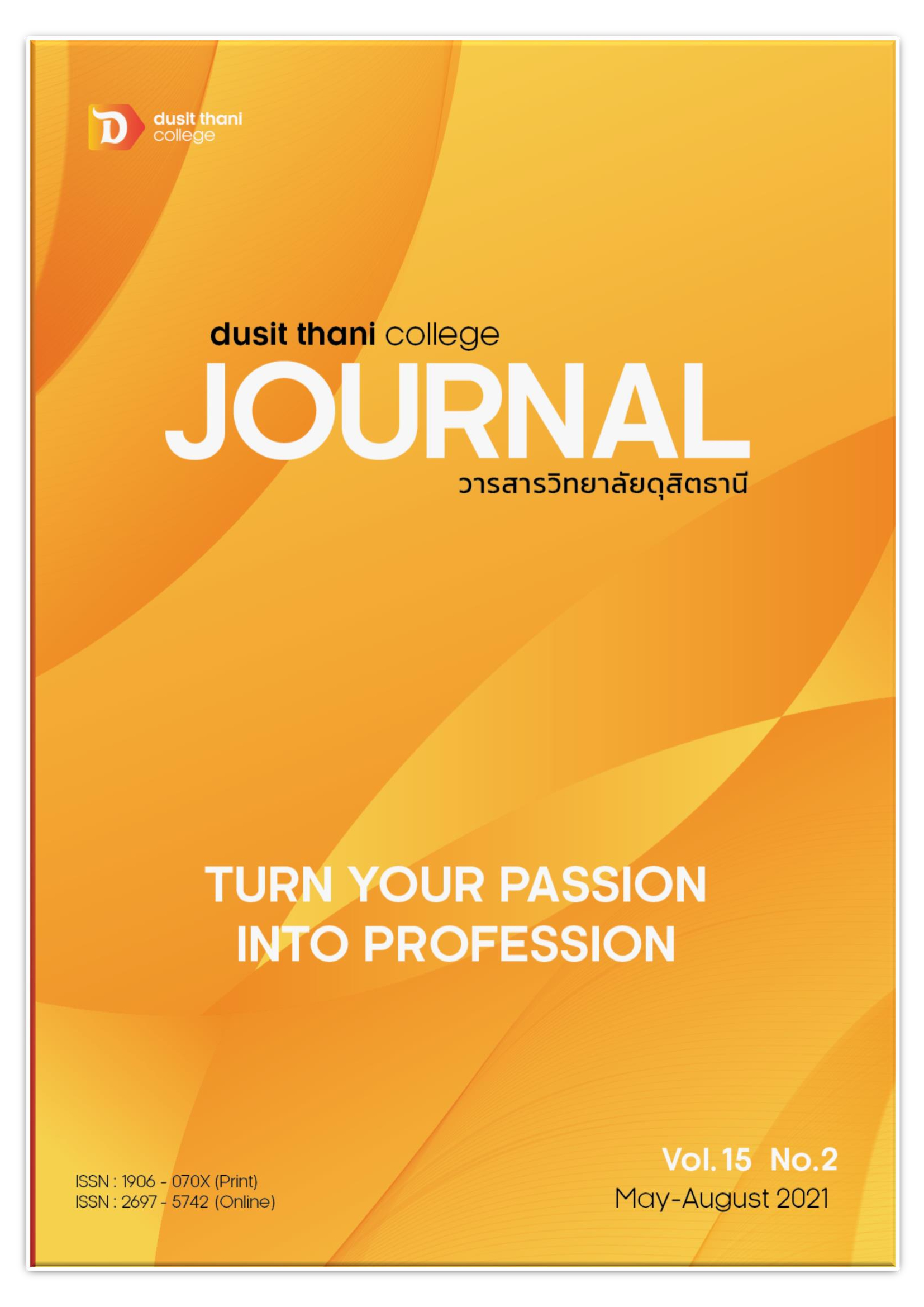THE APPLICATION OF ASEAN COMMUNITY-BASED TOURISM STANDARD FOR DEVELOPING MUEANGMADAN COMMUNITY-BASED TOURISM AT TAMBOL TASAI, MUENG NAKHON NAYOK DISTRICT, NAKHON NAYOK PROVINCE
Main Article Content
Abstract
The objectives of this study were to (1) study the current context of Mueangmadan community-based tourism and the readiness of community-based tourism management in accordance with the components of the ASEAN community-based tourism standard, (2) assess community-based tourism management by applying the components of the ASEAN community-based tourism standard; and (3) propose guidelines for application of ASEAN community-based tourism standard to develop Mueangmadan community-based tourism. This research was mixed method research conducted in-depth interviews with a total of 15 key informants, including community leaders and community product producers and distributed a questionnaire for 155 tourists. The content analysis and descriptive statistics such as frequency, percentage, mean and standard deviation were applied for data analysis. The research result showed that overall, the community has potential for site and tourism activities. The readiness of community tourism management was found to be readily available in some components such as promoting the well-being of society, conserving and improving the environment, and encouraging interaction between the community and tourists. The overall assessment of community tourism management was at a high level. Additionally, the application of the ASEAN community-Based tourism standard consists of 6 components: tourism community management, tourism environmental promotion, environmental conservation and improvement, promoting collaboration between communities and tourists, quality of tour services, and food and beverage service quality.
Article Details
Article Screening Policy
- All research and academic articles to be published must be considered and screened by three peer reviews in the relevant field / article.
- All articles, texts, illustrations and tables published in the journal are the personal opinions of the authors. Editors don't always have to agree. And no responsibility whatsoever is the sole responsibility of the author.
- The articles to be published must never be published. Where did you first publish? And not in the consideration of other journals If the audit found that there has been a duplicate publication It is the sole responsibility of the author.
- Any article that the reader sees as being plagiarized or impersonated without reference. Or mislead the work of the author Please let the journal editor know it will be your greatest blessing.
References
Cohen, D. and Crabtree, B. (2006). Qualitative Research Guidelines Project. Retrieved from https://qualres.org/HomeInte-3810.html
Cronbach, L. J. (1990). Essentials of Psychological testing. (5th ed). New York: Harper Collins Publishers.
Ellis, S. (2011). Community based tourism in Cambodia: exploring the role of community for successful implementation in least developed countries. Retrieved from https://ro.ecu.edu.au/theses/451
Krejcie, R. V. and Morgan, D. W. (1970). Determining Sample Size for Research Activities. Educational and Psychological Measurement, 30(3), 607-310.
Nakhonnayok Provincial Office. (2019). Nakhon Nayok Province Development Plan 2018- 2021. Retrieved May 30, 2019, from http://www.nakhonnayok.go.th/ (in Thai)
Nitikasetsoontorn, S. (2014). The Success Factors of Community-Based Tourism in Thailand. Retrieved May 30, 2019, from http://www.libdcms.nida.ac.th/thesis6/2014/b185058.pdf
Sangsawang, N., & Salaimanee, D. (2018). Guidelines for community-based tourism management in Thailand to prepare for the ASEAN community-based tourism standard: Case Study of Baan Chom Chaeng Community, Nong Khai Province. 6th International Conference on Creative Technology & 2nd National Conference on Creative Technology, July 24-26, 2018, Rajamangala University of Technology Krungthep, Bangkok, Thailand. (in Thai)
Sarobon, Sin, Wongtumtim, U. & Punyoyai, A. (2003). Community-Based Tourism: Concepts and Experiences. Chiang Mai: Wanida Press. (in Thai)
Satarat, N. (2010). Sustainable Management of Community-Based Tourism in Thailand. Retrieved May 30, 2019, from http://www.libdcms.nida.ac.th/thesis6/2010/b166706.pdf
Sophea Sok. (2013). CBT Standards Development & Application. Retrieved May 30, 2019, from http://www.sustain.pata.org/
Suansri, P. (2003). Community-Based Tourism Handbook. Bangkok: Responsible Ecological Social Tours Project. (in Thai)
Suttipisan, S. (2014). Creative Community-based Tourism: An Integrated Tourism Management Approach in Thailand. Paper presented at the ICADA2014: Toward ASEAN Development Administration, National Institute of Development Administration, Bangkok.
The Thailand Community Based Tourism Institute. (2007). Community Based Tourism. Retrieved May 30, 2019, from http://www.cbt-i.org/travel.php (in Thai)
Wichasawat, W. (2018). Guideline for Potential Development of Administration and Management of Community-Based Tourism. Research report. Bangkok: Phranakhon Rajabhat University. (in Thai)


